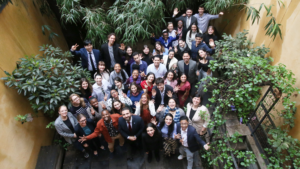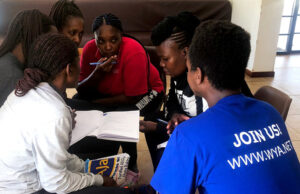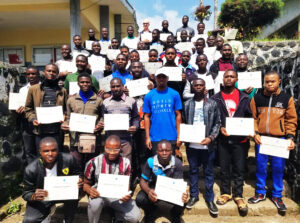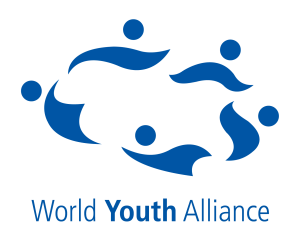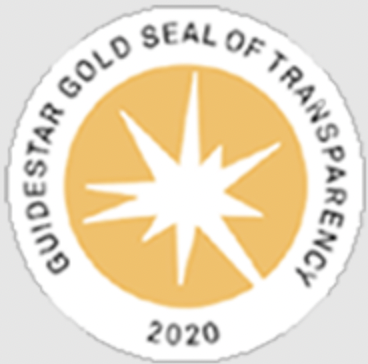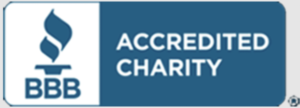 July 31, 2017 – My first trip to Lebanon took place weeks after a school bus full of children was bombed. When I arrived in Beirut following this tragedy I learned how much my visit meant to our collaborators, members, and friends. I was brave, they said. Their willingness to serve as witnesses to human dignity in the midst of grave trials had encouraged me. Together, we would push on to open WYA Middle East.
July 31, 2017 – My first trip to Lebanon took place weeks after a school bus full of children was bombed. When I arrived in Beirut following this tragedy I learned how much my visit meant to our collaborators, members, and friends. I was brave, they said. Their willingness to serve as witnesses to human dignity in the midst of grave trials had encouraged me. Together, we would push on to open WYA Middle East.
That trip proved important in many ways, not least because of its link to WYA’s new Human Dignity Curriculum (HDC). While meeting with educators, schools, diplomats and religious leaders across the country it was suggested: why not take the leadership training we offer our members and develop a schools curriculum to teach these ideas of human dignity at each grade? It would, they felt, be transformative, and allow us to reach young children to shows them the value and worth that they have.
Shortly afterwards, the Philippines RH bill debate further convinced us of the need for a curriculum that could help young people know who they are, rooted in a respect for their human dignity and the dignity of each person.
From 2011-2013 our first HDC was launched in collaboration with the Government of Saint Lucia. For three years we worked together with teachers, families, students, and government officials to test and implement the curriculum in a variety of schools. Over 1700 children participated in these initial pilots, and an indicator of our success has been the ongoing use of these materials in the pilot schools. Not a few of the teachers commented that teaching these concepts to children, and witnessing the transformation they led to, was the reason they had gone into teaching.

Following the Saint Lucia pilot, we set up our first pilot locations in the United States. Partners included the school of St Ann in Harlem, El Camino, working with very young children in the South Bronx, and the broader implementation and evaluation pilots with Catholic schools in Bridgeport, Connecticut, and Malta. One little girl confirmed the power of a lesson in the most heartbreaking way: “ I have learned that I can forgive adults even when they do bad things to me.” (age 11, New York City)
International pilot sites confirmed results and lesson plan outcomes we were seeing in the US. In Mexico, our partners (who cannot be named to protect the identity of their students and teachers, who work with trafficked street children), provided poignant and important feedback. In the Philippines, we have watched the program succeed with joy. In Croatia, we welcomed Government approval for use of the program to meet human rights, civics, and values curricular needs. This followed the very successful pilot programs run by the ever active and dynamic WYA Croatia national committee.

These locations, partners, and successes have been possible because of the commitment of our members, alumni, and friends. The truly global nature of this curriculum, from its first requests through its development and implementation, has been one of the ways in which this project embodies the mission of the World Youth Alliance. Most importantly, the HDC presents a transformative program for young people that help them to answer the question “who am I”. The universal reality of this question is reflected in this curriculum which has had input in its development from each of our six regional offices. It has been tested in the many locations and experiences that we live – some triumphant and others heartbreakingly painful. In all these locations we have found that the curriculum helps children to know themselves, and to reach and achieve human excellence, a challenge that faces each of us no matter where and in what circumstances we live.

During one pilot I taught, the children were trying to figure out, amongst themselves, the essence of this program. A point of clarification emerged. “Do you think we can be excellent?” I was asked. “Yes,” was my reply. A radiant smile lit up her face. As she left, I heard her remark: “She thinks I can be excellent”. This is the essence of the HDC: an opportunity for us to tell our children that we think they can be excellent, and to help them to achieve this. In looking to model this for children, we will undoubtedly help them, and they will help us. As Flannery O’Connor said, the life we save may be our own. The HDC is our chance to bring these big and important ideas to our children, who can re-inspire us to meet the challenge and adventure of human excellence in our own lives.
Written by Anna Halpine, WYA Founder and CEO. Join us on August 4, 2017, 9:00 AM EST for the K-8 launching with Anna Halpine via Facebook Live (www.fb.com/WorldYouthAlliance).

